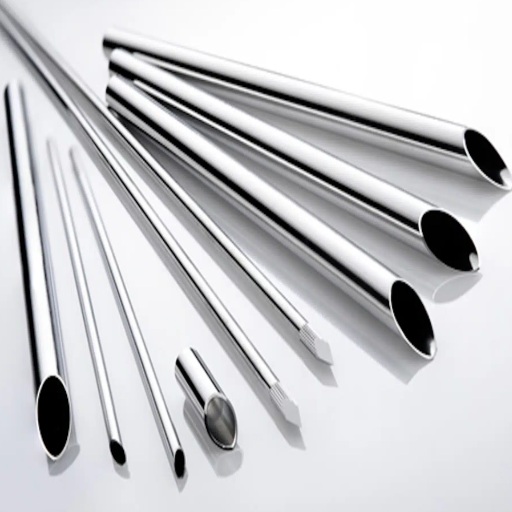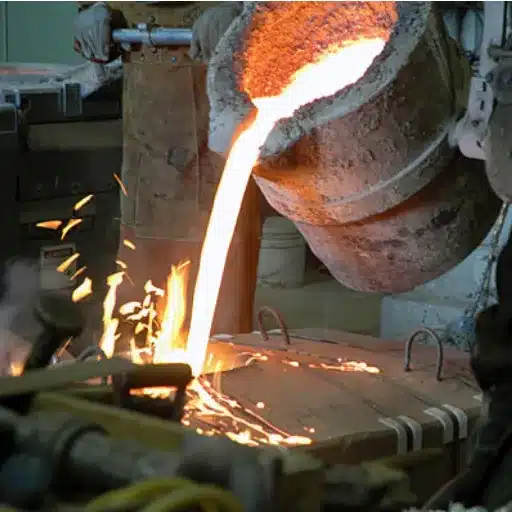Stainless steel tubing is a critical component in industries demanding superior performance, impeccable cleanliness, and stringent precision, such as pharmaceutical manufacturing, food processing, and semiconductor production. However, achieving the high standards required in these sectors isn’t solely reliant on the quality of the material itself—surface preparation plays an equally pivotal role. Enter electrolytic polishing, a state-of-the-art surface finishing technique that enhances corrosion resistance, improves cleanliness, and ensures unparalleled smoothness. This article aims to demystify the process of electrolytic polishing, with a specific focus on electropolished stainless steel tubing. Whether you’re an engineer, a quality assurance professional, or simply curious about advanced manufacturing techniques, this guide will walk you through the fundamentals, benefits, and applications of this highly precise and impactful methodology.
What is Electropolished Stainless Steel Tubing?
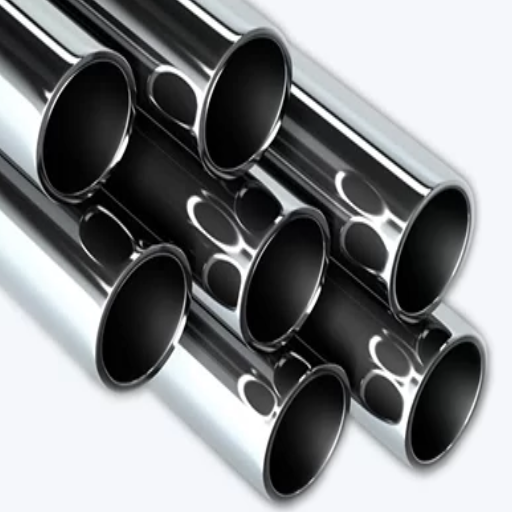
Understanding the Electropolishing Process
Electropolishing is a technique under electrochemistry defined by the smoothing and cleaning of a metal surface by selectively removing metal from its surface. This is done by the use of electric current in conjunction with a chemical electrolyte solution that “dissolves” the peaks on the surface of the metal, as opposed to blunting them using abrasives. Unlike other forms of mechanical polishing, electropolishing uses electricity, which results in a higher degree of smoothness.
Concerning stainless steel tubing, electropolishing is efficient in polishing and giving the tubing a refined look due to high reflectivity while lowering the surface roughness. The finish is not just visually appealing but also serves a purpose. Contaminants and surface impurities are also removed during this process, leaving behind a passivation layer. The passive layer improves corrosion resistance, an essential requirement for parts used in the pharmaceutical, food, and medical equipment industries.
The electropolishing process generally includes three essential steps. Initially, the tubes are cleaned meticulously to eliminate oils, dirt, or any other materials that could obstruct polishing. Following this, the tubing is placed in an electrolyte solution, and an electric current is passed through it. During this phase, material is extracted from the surface’s peaks. Subsequently, the tubing is rinsed to remove residues from the electrolyte solution. This systematic procedure makes certain that the stainless steel tubing fulfills strict quality requirements criteria fit for proving performance and reliability standards.
Benefits of Electropolished Tubing
Compared to either untreated or mechanically polished stainless steel, electropolished tubing has much greater resistance to corrosion. The polishing process done electrolytically helps remove irregular surfaces and impurities which aids in reducing crevice corrosion. This further helps litigation corrosion, especially in harsh environments or with chemicals, making the electropolished tubing last longer.
Another key benefit is the smoothness of the internal surface of the tubing. Electropolishing works towards creating an anti-adhesive surface, which is needed in the pharmaceutical, food, and semiconductor industries where contamination and bacterial growth are prohibited. Moreover, cleanliness is vital; hence, having such surfaces helps comply with the standard operating procedures. Angled surfaces lessen slip power, thereby increasing efficiency, and these surfaces enable these objectives to be attained.
Optimum flow conditions are vital for some processes and this is what further enhances the efficiency of fluid flow. Eliminating rough peaks and valleys allows for greater flow dynamics. Achieving this goal while ensuring other stringent requirements add make electropolished tubing a necessity for industries which require amazing durability, performance, and cleanliness.
Applications in Semiconductor Industries
Electropolished tubing has a basic function in the semiconductor sector, as maintaining contamination-free environments is critical. The production processes in semiconductor industries require the transportation of ultra-pure liquids and gases. Impurities within the transport mechanisms will affect the delivery system and subsequently the final product. Electropolished tubing solves this problem through its ultra-smooth internal surface, which is free of contaminants, thus lowering the risks of particles or chemicals interacting with surfaces and guaranteeing proper flow of materials.
Also, in high vacuum areas during the semiconductor processes like chemical vapor deposition (CVD) or etching, some other important applications are called upon. The smooth internal finish of the electropolished tubing improves the ability of the material to hold low pressure and reduces outgassing, which is a common type of contamination found in vacuum systems. This assures that there is optimal performance and reliability is repetition occurs in processes requiring stringent conditions.
In addition to that, electropolished tubing improves the longevity and reliability of the semiconductor cleanrooms. Other than maintenance cost reduction, the high level of corrosion resistance from the electropolishing, leads to reduced damage in using aggressive chemicals. This guarantees the seamless functionality of critical systems and positions electropolished tubing as an essential part for sustaining advanced manufacturing processes in semiconductors.
How is Stainless Steel Tube Manufactured?
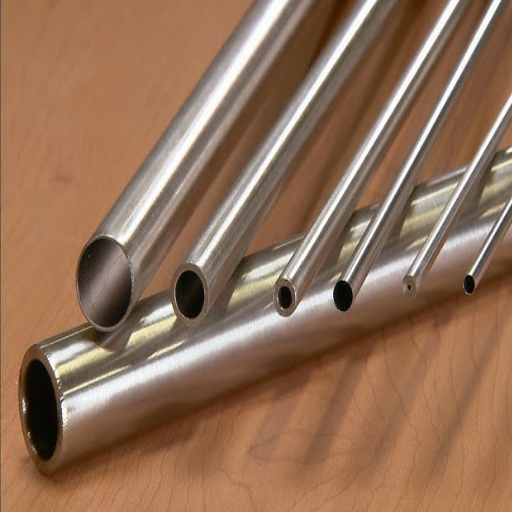
Differences Between Seamless and Welded Tubes
There is a difference between the mechanical attributes, their applications, and even the way they are manufactured in seamless tubes and welded tubes. Unlike seamless tubes, which have no weld joints, seamless tubes are created through extrusion processes where a solid cylindrical steel billet is first perforated and then elongated to form a hollow tube. As a result of this process, seamless tubes can withstand high pressure and have a uniform structure, which is beneficial when they are used in highly demanding industries like aerospace, power, oil, and gas.
Welded tubes, on the other hand, utilize the simpler method of rolling stainless steel sheets into a tubular shape and then welding the seam. The joined seam has become stronger due to technological advancements in welding, like laser and TIG welding. It would be difficult to find an industrial application where they would be deemed unreliable. Welded tubes are most popular in construction, food processing, and automotive industries, where internal pressure or extreme mechanical stress is less of a concern. In comparison to other types of tubes, these are easier to produce and therefore more cost-effective.
Important distinctions can also be made regarding surface finish and dimensional accuracy. In comparison to other welded tubes, the welded type has tighter tolerances and smoother internal surfaces. This suits the welded tube’s use in sanitary piping or exchangers. Seamless tubes are generally considered stronger and better than seamless tubes due to their ability to withstand highly corrosive environments, stress, and thermal expansion without losing structural integrity.
Design engineers assess the best choice for an application based on corrosive environment, temperature, pressure, and cost. These variables are used to choose the best materials. Selection is the most critical step while the operation of the industrial plant is sensitive to changes in performance and safety.
Role of Electrolytic Polishing in Manufacturing
Electrolytic polishing, is a well known finishing process in the industry because it increases the surface finish quality of metal parts. It is done by immersing the workpiece into an electrolytic solution, then providing it with electric current to remove some of the material. This process greatly improves the surface of the metal component by making it more reflective in addition to improving the function of the component.
Electrolytic polishing has many benefits, one of which is the reduction of surface roughness and removal of burrs and weld discoloration. These enhancements improve the component’s ability to endure stress and resist abrasion, making electropolishing the best technique for use on devices in the aerospace or medical, or semiconductor industries. Also, the procedure enhances corrosion resistance by removing surface contaminants and building a passive oxide layer, especially in stainless steels and other alloys resistant to corrosion.
Due to the ultra-smooth surfaces created during electrolytic polishing, contaminants, microbes, and residues cannot further adhere, making it indispensable for applications requiring sterility. This is also important in the production of medical instruments, surgical tools, and pharmaceutical equipment. Moreover, uniformity of outcome in the precision worked on complex designs is guaranteed as electropolishing can process intricate geometries and areas that are hard to reach.
The modern manufacturer is offered precision at an economical price, which has raised the prominence of the procedure. Indeed, the versatility and scalability of the mechanism’s cost is equally impressive. By optimizing surface properties and extending product life, electrolytic polishing also ensures that components achieve the stringent requirements of various industries, solidifying the technique’s significance in high-performance manufacturing settings.
What are the Key Properties of EP Stainless Steel Tubing?
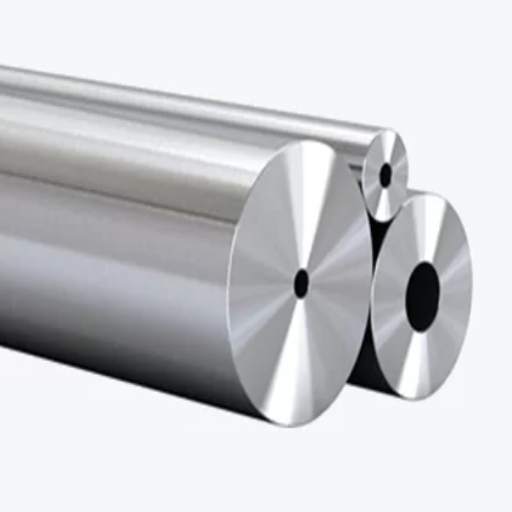
Importance of Surface Roughness and Finish
The surface roughness and finish give shape to the functionality, durability, and performance of EP (Electrolytic Polished) stainless steel tubing. Several theories show how accurately electrolytic polishing is done, whereby the mean roughness (Ra) is shown to be less than 0.25 µm. This smooth finish is necessary for industries like pharmaceuticals, semiconductors, and food processing that require extreme cleanliness.
Having low surface roughness greatly aids in reducing turbulence at the boundary of fluid flow. This minimizes the adhesion of unwanted substances to the walls of the tubing, leading to a decrease in contamination. This is a gainful property for both cleanliness and the general operation of the systems employing the tubing. Additional improvements in corrosion resistance are gained by having smooth surfaces free of nooks and crannies that would otherwise pose a risk to structural integrity over time.
Tubing must not deviate from set values for surface texture to ensure system dependability. Take, for example, the fabrication of semiconductors; inadequate surface refinements can result in particle creation or contamination, which jeopardizes the production efficiency and integrity of products. Therefore, the need to maintain and enhance surface roughness should not be regarded as a superficial refinement, but as an imperative requisition to attain accuracy and dependability in modern sophisticated industries.
Ensuring Corrosion Resistance and Durability
Corrosion resistance is a crucial capability when designing any industrial part that undergoes considerable machine operations, especially in conditions of frequent moisture, extreme heat, chemicals, or low temperatures. Deterioration of industrial components due to corrosion not only damages their structural integrity but also leads to expensive repairs, replacements, and prolonged operational downtime. To prevent such losses, the initial approach to alloy selection is critical, as they need to be other materials for stainless steel, titanium, and iron, since they are best known to withstand oxidation and chemical breakdown.
Applying new techniques in surface engineering improves the sturdiness of the materials and makes them more corrosion resistant, and also gives them greater longevity. Protecting base materials from corrosive substances can be accomplished by applying opposing materials to the base substance. Methods such as electroplating, vapor deposition, and thermal spray work to form protective coats that can make the base attractive and durable. Protecting base materials from corrosive elements is also possible through emerging nanocoatings, which clean the tin layer and make the operative from the outer skin, which is extremely thin and consistent. Calculations show that extra strong coats in harsh working conditions can increase component life expectancy by over 40% through quantitative evaluation and analysis.
Moreover, applying and inspecting for corrosion inhibitors should, at a minimum, be done periodically. Regular and predictive analytics, as well as non-invasive techniques like ultrasonic and thermographic testing, make it easy to identify potential corrosion risks before they cause damage. All of these tools are reliant on a broader maintenance strategy put into place to increase the dependability of components and systems in modern industrial systems.
Achieving High Purity and Contaminant-Free Surfaces
Advanced cleaning methods, high-precision machining, and strict control of processes collectively enable the achievement of high purity and contaminant-free surfaces. Chemical cleaning techniques based on alkaline and acid solutions use specific solvents that either dissolve or dislodge particular impurities while protecting the substrate’s surface. Furthermore, the removal of particles that cling due to static or surface tension is also done through physical cleaning methods like ultrasonic agitation and high-pressure water jets.
Characterization of surfaces has a significant contribution towards achieving these particular standards. Moreover, maintaining cleanroom conditions during manufacturing or maintenance has a significant mitigation effect on the deposition of airborne particulates, which serves to make sure that environmental factors do not compromise cleaning work.
The combination of these techniques allows for great surface purification, which is essential in semiconductor materials, medical devices, and aerospace engineering, where even minute impurities can compromise the proper working, lifetime of the device, or adherence to industry standards.
Why Choose EP Tubing for Clean Room Applications?
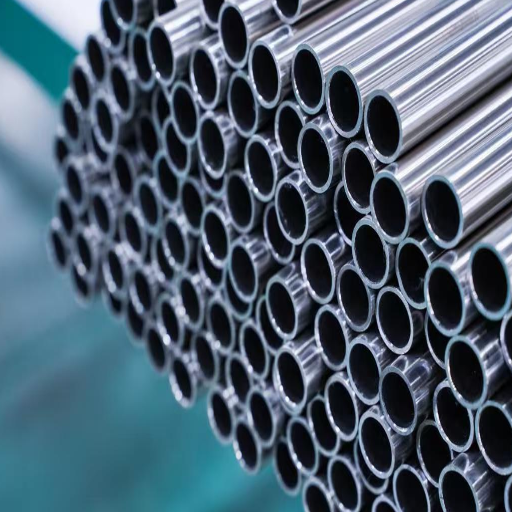
Maintaining Cleanliness Standards
To protect and maintain sterility for cleanroom procedures that necessitate a high level of cleanliness, EP tubing comes with unique features that avoid contamination. Tubing EP’s smooth internal surface guarantees the absence of obstruction to the free flow of fluids and gases, thereby avoiding the introduction of impurities through particles.
In conjunction with advanced filtration systems, EP tubing also helps achieve the clean minus microbiological and particulate goals. This is critical in industries such as electronics manufacturing, biotechnology, and pharmaceuticals where ultra ultra-clean environment is needed for product consistency, and developing sustainable standards and quality benchmarks for the products. Together with EP tubing, advances in material science technologies improve the chemical resistance and mechanical durability of the tubing, which ensures compliance with the benchmarks even in corrosive and high-stress conditions.
In controlled environments where microscopic discrepancies can equate to deviations in the results, product faults or regulatory non-compliance consequences can rely on control precision dependable factors while relying on alternative EP tubing precision capable of meeting conditions set by market standards at above 30% traditional reduction in contamination.
Reducing Contaminants in Ultra-High Purity Environments
Reducing contamination in ultra-high-purity (UHP) systems requires dealing with material design, rigorous process validation, and sophisticated monitoring in parallel. Throughout various studies, even the most minute contaminants, whether they are part of a solid, liquid, or gas, have measurable impacts on system dependability and product quality. Selecting structureless chemicals like PFA and EP tubing proves to be useful in restricting leachables and extractables, which is essential in maintaining purity.
Besides, laser particle counters or chemical analyzers that monitor contamination in real time can pinpoint the very start of minimum deficiencies and prevent them from transforming into crucial setbacks. Such systems facilitate process changes and maintenance that improve the probability of sustaining precise and stringent thresholds of industry standards like ISO 14644 for cleanrooms or SEMI F57 for components tagged as ultra-high purity. Moreover, the use of clean-in-place (CIP) systems with validated detergents enables the removal of contaminants with a high degree of precision and reliability while using automated cleaning and sterilization methods.
Implementing these strategies allows laboratories and manufacturing environments to achieve ultra high purity standards in an unprecedented manner, ultimately protecting the dependability of results while bolstering adherence to international norms for quality and safety.
What Standards Govern the Production of Electropolished Steel Tubes?
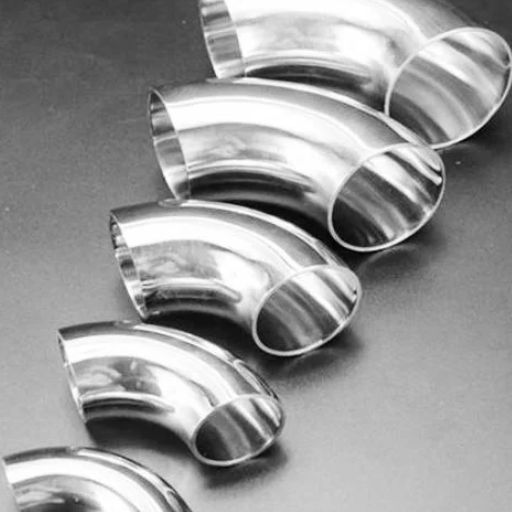
Overview of ASTM A269 Specifications
The purpose of Grade A269 is to elaborate on the particular requirements regarding seamless and welded tubes made of austenitic stainless steel. The intended use of the tubing is for general corrosion resistance along with high or low temperature services. This specification includes very specific details regarding chemical composition, mechanical attributes, dimension accuracy, and even the methods employed to conduct the tests, assuring the needed quality and performance standards set are met.
Some properties included under ASTM A269 include very precise controls on some elements containing carbon, manganese, phosphorous, sulphur, silacon and chrome. These elements helps maintain sufficient corrosion resistance as well as structural strength. Moreover, the tubing will also be undergoing non-destructive testing like eddy current or hydrostatic testing further assuring reliability measures of measuring internal and external flaws.
These tolerances capture and correct for oversights concerned with the couplings and sockets of the tubes, assuring ease of attachment without any incidence of movement during an operation. These wide-ranging industries require these particular guarantees and enable better marker accuracy in cuts in a more precision-driven application. All of the amounts allowed for the wall thickness, outside diameter, and ovality are calculated from the nominal size of the tube.
ASTM A269 is a thorough specification for the electropolished steel tubes, reinforcing uniformity and dependability across various industries and scientific applications. Compliance with such a standard allows manufacturers to reassure stakeholders about the quality of the steel and its capability of withstanding harsh conditions.
Compliance with Semiconductor Industry Requirements
To implement reliable and precise measures within its highly sensitive applications, the semiconductor industry sets some of the most stringent material and manufacturing practices within the entire industry. Stainless steel tubing electropolished according to ASTM A269 is of paramount importance for ultra-high-purity UHP systems for the transport of process gases, chemicals, and ultrapure water. These systems require surfaces to be free from contamination and particulate generation.
The surface of semiconductor environments bears strict corrosive and cleanliness regulations, which are accomplished through electropolishing. Such tubing surfaces are usually polished to within 10 micro inches Ra or 0.25 micrometers, indicating low particle capture and biofilm growth, which within the industry becomes the standard.
Cleansing for contaminants such as organic or metallic residues, which may alter the performance of sensitive semiconductor devices, is essential for maintaining quality standards like SEMI Standard F19. Catheterally polished tubes that are tested exhaustively for leak integrity, corrosion resistance, and mechanical strength assure the consumer of reliable performance under extreme pressure and temperature conditions.
Following these established guidelines allows for the optimization of performance on semiconductor manufacturing activities with minimal chances of contamination or system failure. This compliance structure helps maintain industry device yield and product quality standards.
References
- Electrochemical Polishing of Austenitic Stainless Steels – This article discusses the mechanisms and results of electropolishing stainless steel, providing a scientific basis for its feasibility.
- Electropolishing Stainless Steel Pipes – This resource highlights the benefits of electropolishing, such as enhanced smoothness and corrosion resistance, which are critical for clean and sterilized production.
- What is Electropolished Stainless Steel Tubing? Properties and Uses – This blog outlines the advantages of electropolished tubing, including increased durability, corrosion resistance, and improved surface finish.
Frequently Asked Questions (FAQ)
Q: What is electrolytic polishing, and how does it work?
A: Electrolytic polishing, also known as electropolishing, is an electrochemical process used to polish, passivate, and deburr metal parts. It works by removing a thin layer of material from the surface, resulting in a smooth and polished appearance. This process is commonly used for stainless steel pipe and stainless steel EP tubing.
Q: What are the benefits of electropolishing stainless steel?
A: Electropolishing stainless steel enhances corrosion resistance, improves surface finish, and provides a hygienic, ultra-high purity surface ideal for sanitary applications. It removes surface contaminants and creates a polished appearance, making it suitable for ultra-high-purity fluid systems.
Q: What types of stainless steel are suitable for electropolishing?
A: Various grades of stainless steel, including 304 stainless steel and stainless steel 316l electropolished, are suitable for electropolishing. These grades are commonly used for electropolished stainless steel tubes due to their excellent corrosion resistance and mechanical properties.
Q: How does electropolished stainless steel tubing differ from regular stainless steel tubing?
A: Electropolished stainless steel tubing has a smoother, cleaner surface with a polished appearance, which reduces the risk of contamination and improves corrosion resistance. This makes it ideal for applications requiring high purity and sanitary conditions, unlike regular stainless steel tubing.
Q: What are the typical applications of electropolished tubes?
A: Electropolished tubes are used in a variety of applications, including sanitary applications, ultra high purity fluid systems, and industries like pharmaceutical, biotechnology, and food processing. Their polished surface meets stringent cleanliness and purity standards.
Q: Can seamless stainless steel be electropolished?
A: Yes, seamless stainless steel can be electropolished. Seamless steel, including seamless stainless steel, benefits from electropolishing by achieving a polished appearance and enhanced surface properties, making it suitable for demanding applications.
Q: What is the difference between 316L and 304 stainless steel in electropolishing?
A: 316L stainless steel contains molybdenum, which provides better corrosion resistance, especially in chloride environments, compared to 304 stainless steel. Both can be electropolished, but 316L is often preferred for harsher conditions due to its superior durability.
Q: How does the electropolishing process affect the dimensions of stainless steel tubing?
A: The electropolishing process removes a thin layer of metal from the surface, which can slightly reduce the dimensions of the stainless steel tubing. However, this reduction is usually negligible and does not affect the tubing’s structural integrity.
Q: Are electropolished stainless steel pipes suitable for ultra-high purity applications?
A: Yes, electropolished stainless steel pipes are ideal for ultra-high purity applications. The electropolishing process ensures a smooth, contaminant-free surface that meets stringent purity standards required in industries like semiconductor manufacturing and pharmaceuticals.

